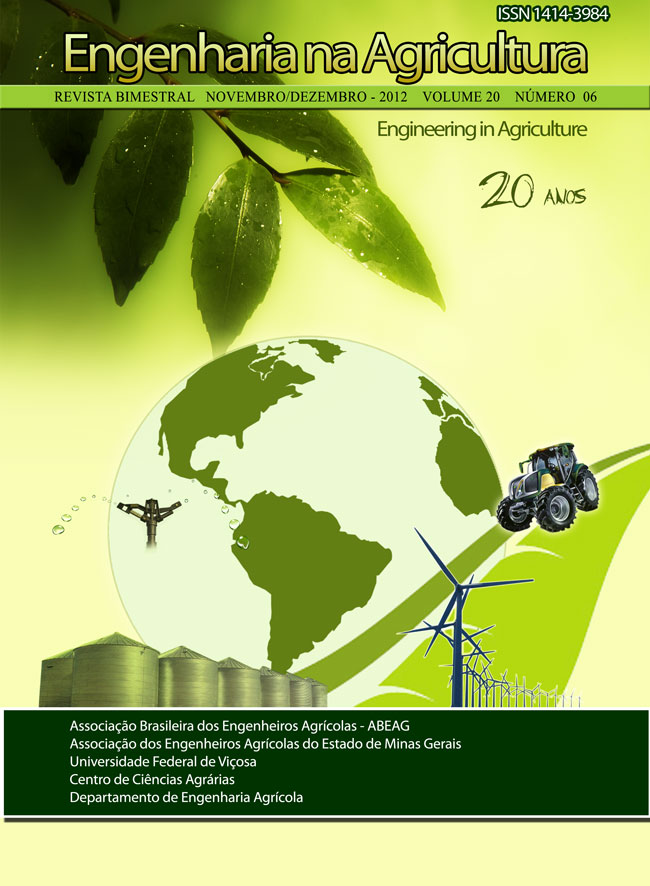PRODUCTION OF BIOGAS AND BIOFERTILIZER FROM BIODIGESTION OF CASTOR BEAN CAKE WITH AND WITHOUT ANIMAL MANURE
DOI:
https://doi.org/10.13083/reveng.v20i6.293Keywords:
digestão anaeróbia, Ricinus communis, tratamento de resíduosAbstract
The objective of this research was to quantify the production of biogas, characterize the biofertilizer, resulting from anaerobic digestion of castor bean cake, with and without manure. Bench digesters were operated in batch, containing 2 L of substrate. The three treatments were: castor bean cake with addition of bovine manure and water (T2), castor bean cake with the addition of swine manure and water (T3), with 9 dag kg-1 and ST with three replications. The amount of slurry applied corresponded to 15% of weight of ST substrate. The highest biogas production was observed in T2 (2.03 L), being similar in T1 and T3 (P> 0.05). The biofertilizer T1 showed the highest concentration of Nitrogen (6.13 g L-1). The phosphorus content was greater in T3 (867.80 mg L-1) and pH values, potassium and sodium were similar for all three treatments. The potential of biogas production were higher in T2. It was concluded that the castor bean is a good substrate for the production of biogas and biofertilizer with satisfactory chemical qualities, being observed increase production of this gas when associated with cattle manure.Downloads
Downloads
Published
How to Cite
Issue
Section
License
Authors who publish with this journal agree to the following terms:
The author(s) authorize(s) the publication of the text in the journal;
The author(s) ensure(s) that the contribution is original and unpublished and that it is not in the process of evaluation by another journal;
The journal is not responsible for the views, ideas and concepts presented in articles, and these are the sole responsibility of the author(s);
The publishers reserve the right to make textual adjustments and adapt texts to meet with publication standards.
From submission, the author is fully conceding the paper's patrimonial rights to the publication, but retaining the owner of its moral rights (authorship and paper's identification) according to Creative Commons Attribution-Noncommercial.








 Licensed by
Licensed by 